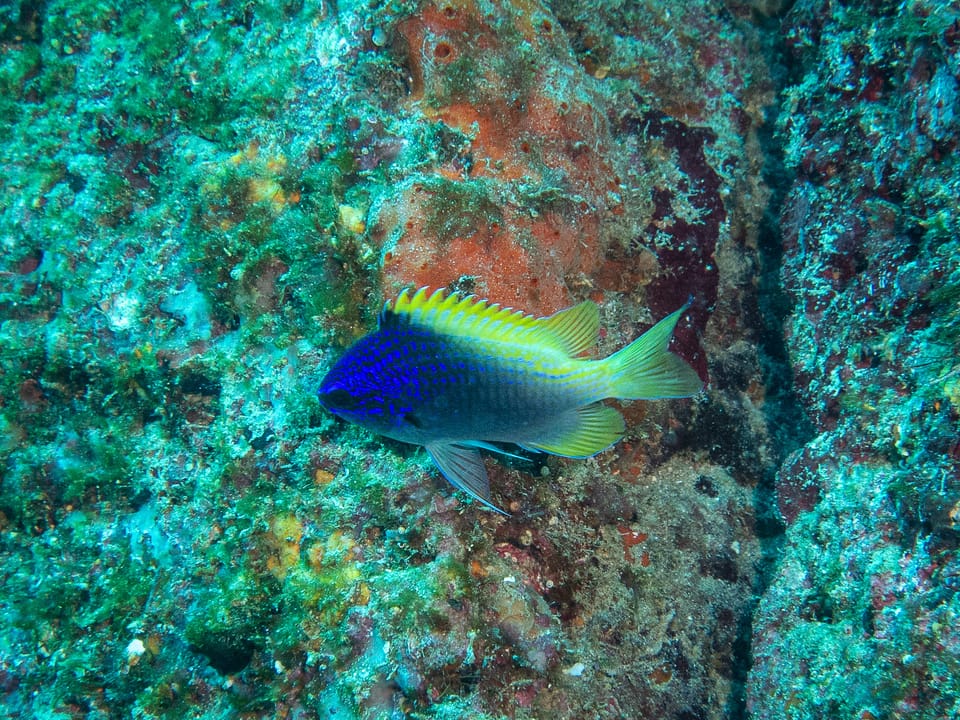Creatures That Light Up the Dark

Flickering lights on a warm summer evening, finger-like shapes glowing bright orange in the moist dark of a wetland, and small pinpricks of light dotting the ocean waves. What are these unexpected lights and where do they come from?
The night is a safe environment for many small creatures as the dark hides them from predators. But other creatures create their own light to attract attention. Here are just a few of the many organisms that light up the dark, primarily through chemical reactions known as bioluminescence.
Fireflies
Fireflies are beetles and there are more than 2,000 species worldwide. They spend most of their lives as grub-like larvae that glow, possibly to warn potential predators that they taste horrible and may be deadly. Some adult fireflies use light to attract a mate, but others use air-borne smells (pheromones) to communicate.
Additional Resources: 11 Cool Things You Never Knew About Fireflies [Scientific American]
Plankton
Glowing plankton can be spotted lighting up the ocean along Canada’s west coast on dark summer nights. Throughout the marine world, creatures ranging from tiny zooplankton to large whales rise from the depths of the ocean to the surface waters to feed and mate, only to descend again just hours later. It’s one of the largest and most frequent animal migrations but often goes unnoticed.
Over 90% of nature’s bioluminescent organisms live in the world’s oceans. Dinoflagellates, tiny one-celled marine plankton also known as fire plants, are the most common source of marine bioluminescence. Dinoflagellates produce a flash of light when they are disturbed in the hopes that this will attract the attention of a predator that will get rid of whatever creature is disturbing them.
Additional Resources: Bioluminescent Plankton: What makes it glow? [Scuba.com]
Bioluminescent Fungi
While fireflies light up to attract a mate, fungi light up to attract insects that will spread their spores. Swamp beacon (mitrula elegans) is a small orange glowstick on a white, translucent stem found growing on decaying leaves in BC’s wetlands.
It’s the mycelia of honey mushrooms (armillaria mellea) that glow, perhaps to discourage animals from eating them. And it’s not just the mycelia that shine as the fungi lends its light to the decaying wood through which it winds its way, creating what is known as touchwood. Soldiers during World War I placed pieces of touchwood on their helmets so they could see each other.
Additional Resources: 10 Bioluminescent Mushrooms That Glow in the Dark [Treehugger]
Glowing Beaks & Reflective Plumage
Some birds shine, although not because of bioluminescence. While the human eye cannot detect ultraviolet light, that’s not the case with birds that see a much wider spectrum of visible light.
Shine an ultraviolet light on a puffin’s beak and fluorescent stripes appear as if by magic. When exposed to ultraviolet rays, the beak absorbs the light and produces its own visible, brightly coloured light. King and emperor penguins also have fluorescent beaks, while most owl species have fluorescent wings. Starlings and many tropical songbirds are not fluorescent but do have UV reflective plumage.
Additional Resources: Everything We Know About Birds That Glow [Atlas Obscura]
Books
Living Things that Light up the Night, Julia Kuo – Glowing images along with scientific information about bioluminescence in nature combine to create a fascinating book for 4-8 year-olds.
Planktonia: The Nightly Migration of the Ocean’s Smallest Creatures, Erich Hoyt – Wildlife photographers capture the luminescent beauty of microscopic planktons on their daily migrations.
Photo credit: https://www.flickr.com/photos/apmckinlay/52488002115/
EcoFriendly West informs and encourages initiatives that support Western Canada’s natural environment through its online publication and the Nature Companion website/app. Like us on Facebook, follow us on Twitter, or subscribe by email.

Member discussion